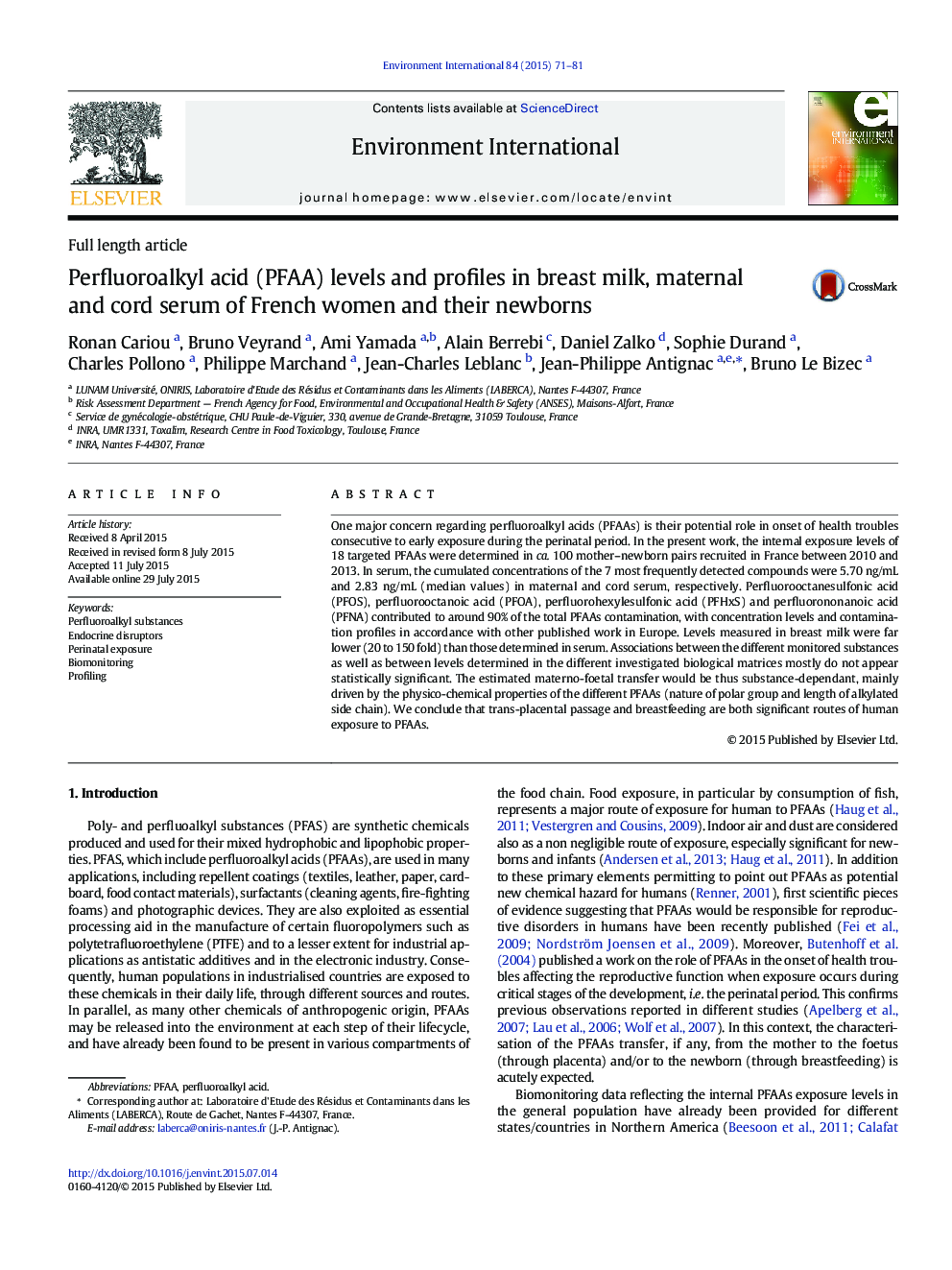| Article ID | Journal | Published Year | Pages | File Type |
|---|---|---|---|---|
| 6313437 | Environment International | 2015 | 11 Pages |
Abstract
One major concern regarding perfluoroalkyl acids (PFAAs) is their potential role in onset of health troubles consecutive to early exposure during the perinatal period. In the present work, the internal exposure levels of 18 targeted PFAAs were determined in ca. 100 mother-newborn pairs recruited in France between 2010 and 2013. In serum, the cumulated concentrations of the 7 most frequently detected compounds were 5.70Â ng/mL and 2.83Â ng/mL (median values) in maternal and cord serum, respectively. Perfluorooctanesulfonic acid (PFOS), perfluorooctanoic acid (PFOA), perfluorohexylesulfonic acid (PFHxS) and perfluorononanoic acid (PFNA) contributed to around 90% of the total PFAAs contamination, with concentration levels and contamination profiles in accordance with other published work in Europe. Levels measured in breast milk were far lower (20 to 150 fold) than those determined in serum. Associations between the different monitored substances as well as between levels determined in the different investigated biological matrices mostly do not appear statistically significant. The estimated materno-foetal transfer would be thus substance-dependant, mainly driven by the physico-chemical properties of the different PFAAs (nature of polar group and length of alkylated side chain). We conclude that trans-placental passage and breastfeeding are both significant routes of human exposure to PFAAs.
Keywords
Related Topics
Life Sciences
Environmental Science
Environmental Chemistry
Authors
Ronan Cariou, Bruno Veyrand, Ami Yamada, Alain Berrebi, Daniel Zalko, Sophie Durand, Charles Pollono, Philippe Marchand, Jean-Charles Leblanc, Jean-Philippe Antignac, Bruno Le Bizec,
